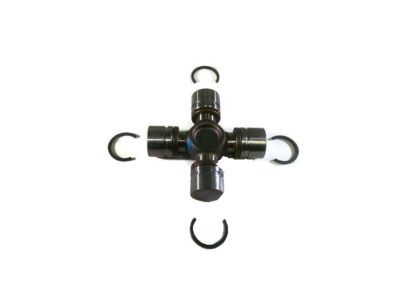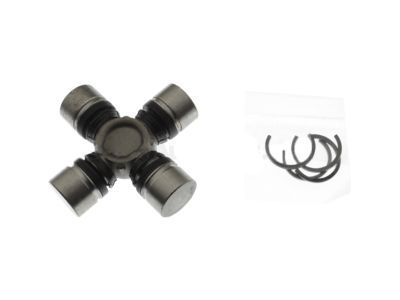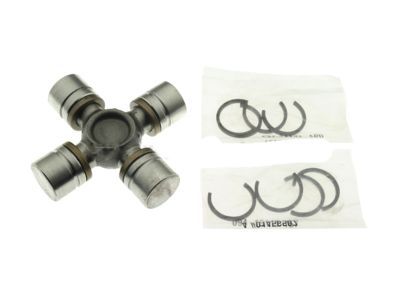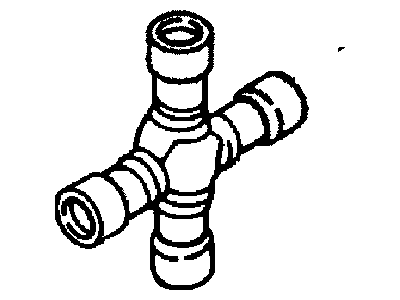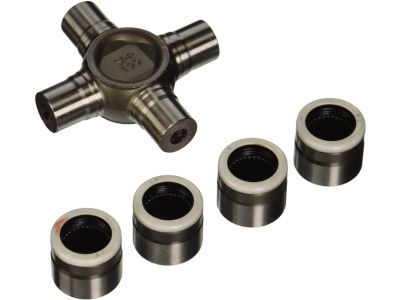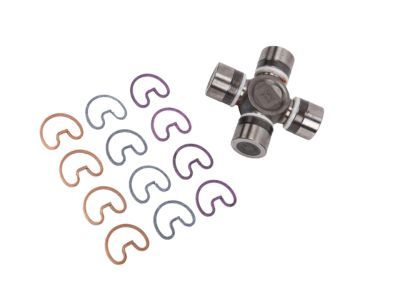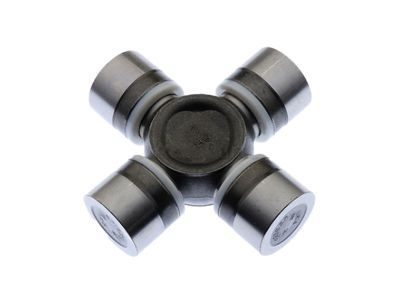
My Garage
My Account
Cart
Genuine Chevrolet Trailblazer Universal Joint
U-Joint- Select Vehicle by Model
- Select Vehicle by VIN
Select Vehicle by Model
orMake
Model
Year
Select Vehicle by VIN
For the most accurate results, select vehicle by your VIN (Vehicle Identification Number).
3 Universal Joints found
Chevrolet Trailblazer Joint Kit, Front Axle Propeller Shaft Front Universal
Part Number: 23104840$36.29 MSRP: $88.98You Save: $52.69 (60%)Ships in 1-2 Business DaysChevrolet Trailblazer Joint Kit,Front Axle Propeller Shaft Universal
Part Number: 89059111$163.11 MSRP: $273.43You Save: $110.32 (41%)Ships in 1-2 Business DaysChevrolet Trailblazer Joint Kit,Propeller Shaft Universal
Part Number: 26008858$62.50 MSRP: $102.75You Save: $40.25 (40%)
Chevrolet Trailblazer Universal Joint
The Universal Joint in Chevrolet Trailblazer is essential in transmitting the rotation of the driveshaft to the differential so as to facilitate movement depending on the status of the suspension system of the vehicle. This joint allows the driveshaft to rotate as needed when angles of the components connected to the driveshaft are distinct from each other. Usually, there is the Universal Joint at the front part of the GM Chevrolet Trailblazer driveshaft coupled with the transmission slip yoke, and at the other end there is the differential yoke or flange. The Universal Joint, which is made out a cross and needle bearings enclosed in steel cups that are harden, has the capability of withstanding wear and tear. Factory Universal Joints are greased and shipped to us while Universal Joints have a grease zerk that can be refilled after a while. Eventually, they develop problems such as noises and vibrations, hence requiring an inspection for replacement for Chevrolet Trailblazer's normal functioning.
Each OEM Chevrolet Trailblazer Universal Joint we offer is competitively priced and comes with the assurance of the manufacturer's warranty for the part. Furthermore, we guarantee the speedy delivery of your orders right to your doorstep. Our hassle-free return policy is also in place for your peace of mind.
Chevrolet Trailblazer Universal Joint Parts Questions & Experts Answers
- Q: How to Inspect, Maintain, and Troubleshoot a Drive Shaft and Universal Joint on Chevrolet Trailblazer?A:A driveshaft is a tube that transmits power between the transmission or transfer case on 4WD models and the Differential, there are universal joints at the two rear ends of the rear driveshaft, and at the front part of the front driveshaft. The front of the driveshaft is provided with a splined yoke to be fitted into the extension housing of the transmission or the transfer case and any change in length due to movements of the suspension during the operation of the car is taken care by the forward and aft movement of this yoke which needs to slide along the length of the containing housing and the rear end is sealed with an oil seal to avoid any leakage of the fluid used in the case The driveshaft assembly virtually has no service interval, as the universal joints are lubricated for the life of the shaft and joint; however, if there is a problem, the shaft has to be removed from the vehicle. The driveshaft should not be covered with undercoating or mud, and should be cleaned and checked for damage when the vehicle is being serviced, while the small weights used for balancing should be checked for integrity and security; during reinstallation the proper position should be maintained for balance. The driveshaft problems generate a noise or vibration during operation, and as a result, require a road test to differentiate with other driveline problems that lead to inspection of the driveshaft. To examine, lift the rear of the car and put it on two jackstands, turn the wheels in the front to lock them. It pays to visually try to check on the driveshaft for any dents or cracks-either of these found then the driveshaft has to be replaced. At the two ends, a shaft should be checked for leakage internally where it merges with the transmission or the transfer case shows a damaged seal while leakage at the differential part shows a pinion seal damage. Having an assistant supporting a rear wheel, run the rear wheel turning a while and insure the universal joints move without binding, noise or looseness or in attempting to twist the joint between your fingers and thumb after clamping the splined ends together. Furthermore, make sure that all the mounting bolts of the driveshaft are properly torqued. For 4 WD models the following checks should be made in addition: On the front driveshaft check if there is leakage around the sleeve yoke, this is a sign of yoke seal failure, also check around the area where the driveshafts connect to the transfer case and the front differential, leakage here indicates worn oil seals. Also, freed the front drive axle joint and look at rubber boots and both ends of each axle for leakage of oil or grease; if there is leakage around the axle flanges it means that the axleshaft oil seal is bad while leakage at the CV joint boots indicate a bad rubber boot.

